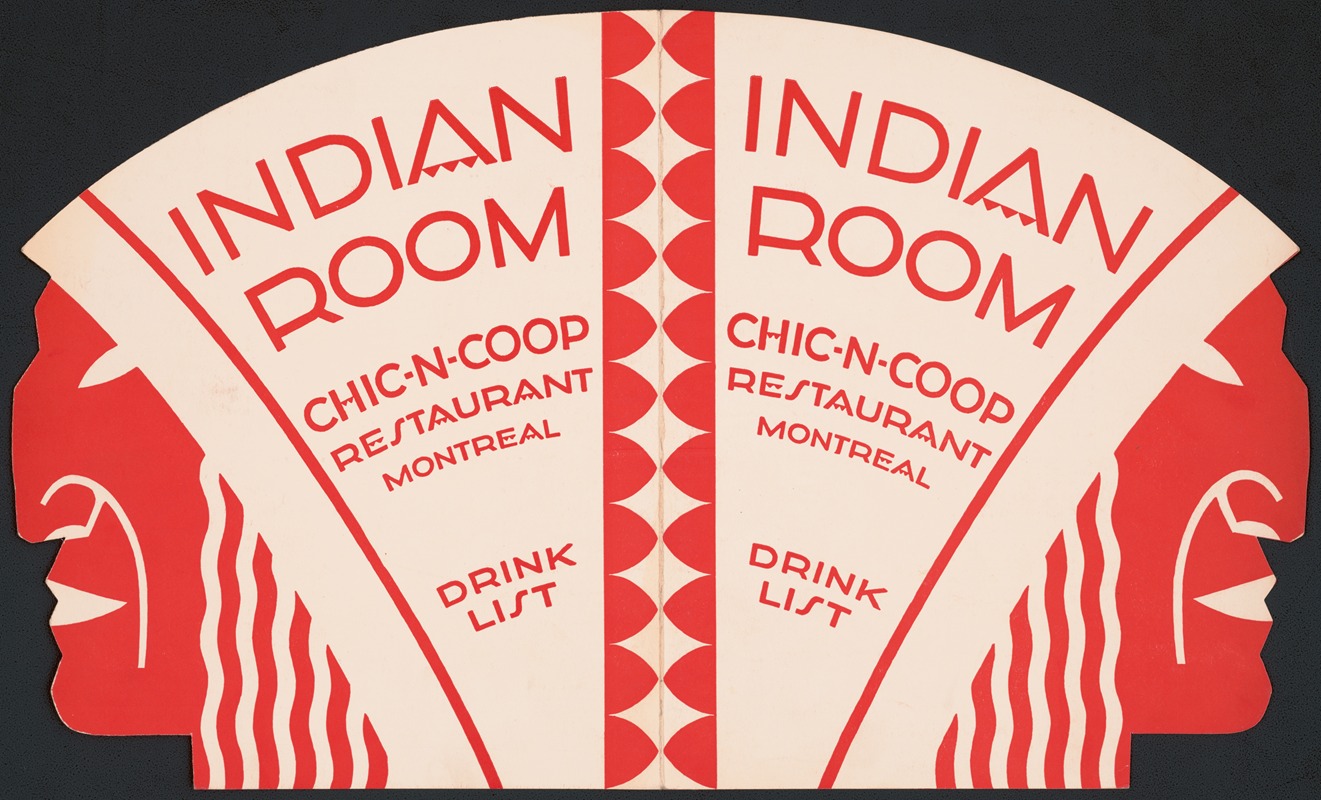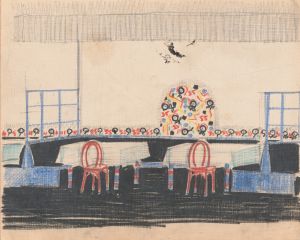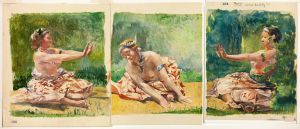
Designs for Indian Room, Chic-n-Coop Restaurant, Montreal, Canada
A hand-painted replica of Winold Reiss’s masterpiece Designs for Indian Room, Chic-n-Coop Restaurant, Montreal, Canada, meticulously crafted by professional artists to capture the true essence of the original. Each piece is created with museum-quality canvas and rare mineral pigments, carefully painted by experienced artists with delicate brushstrokes and rich, layered colors to perfectly recreate the texture of the original artwork. Unlike machine-printed reproductions, this hand-painted version brings the painting to life, infused with the artist’s emotions and skill in every stroke. Whether for personal collection or home decoration, it instantly elevates the artistic atmosphere of any space.
Winold Reiss, a German-American artist and designer, created the "Designs for Indian Room, Chic-n-Coop Restaurant, Montreal, Canada" as part of his broader body of work that often celebrated cultural diversity and incorporated vibrant, modernist aesthetics. Reiss, who was born in Germany in 1886 and immigrated to the United States in 1913, was known for his innovative approach to design and his deep respect for Indigenous and African American cultures, which he frequently depicted in his art.
The "Indian Room" was a thematic interior space within the Chic-n-Coop Restaurant in Montreal, Canada. Reiss was commissioned to design this space, and his work likely included murals, decorative panels, or other artistic elements that reflected his signature style. His designs often blended modernist sensibilities with motifs inspired by Native American art and culture, creating visually striking and culturally resonant environments. While specific details about the "Indian Room" project are limited, it is consistent with Reiss's broader practice of integrating art and design into commercial and public spaces.
Reiss's work in the Chic-n-Coop Restaurant would have been part of his larger career as an interior designer and muralist, where he contributed to numerous restaurants, hotels, and public buildings. His designs often featured bold colors, geometric patterns, and stylized representations of people and landscapes, drawing from a variety of cultural influences. Reiss's ability to merge artistic expression with functional design made him a sought-after figure in the world of commercial art during the early to mid-20th century.
The Chic-n-Coop Restaurant itself was one of many establishments during this period that sought to create unique dining experiences through thematic interiors. By incorporating Reiss's designs, the restaurant would have aimed to provide an atmosphere that was both visually engaging and reflective of broader cultural trends in art and design.
Unfortunately, little documentation exists about the current state or preservation of Reiss's work for the Chic-n-Coop Restaurant, and it is unclear whether the "Indian Room" or its associated designs have survived. However, Reiss's contributions to art and design remain influential, and his work continues to be studied and celebrated for its innovative approach and cultural sensitivity.
This project exemplifies Reiss's commitment to creating art that bridges cultural divides and enhances everyday spaces, leaving a lasting impact on the fields of design and interior decoration.






![Design for dčor of restaurant, 56 East 56th St, New York, NY.] [Drawing of suggested dčor for restaurant with color elevation and murals](/imgs/249282/s/winold-reiss-design-for-dcor-of-restaurant-56-east-56th-st-new-york-ny-drawing-of-suggested-dcor-for-restaurant-with-color-elevation-and-murals-29535340.jpg)
![Design proposals for Puck Theater, New York, NY.] [Interior perspective study](/imgs/249305/s/winold-reiss-design-proposals-for-puck-theater-new-york-ny-interior-perspective-study-616c8d27.jpg)
![Designs for the Tavern Club, 333 Michigan Avenue, Chicago, Illinois.] [Perspective for main dining room with bay window](/imgs/249329/s/winold-reiss-designs-for-the-tavern-club-333-michigan-avenue-chicago-illinois-perspective-for-main-dining-room-with-bay-window-4b6bebcc.jpg)
![Designs for unidentified restaurant interior, possibly Elysée restaurant, 1 East 56th St., New York, NY.] [Drawing of restaurant details](/imgs/249333/s/winold-reiss-designs-for-unidentified-restaurant-interior-possibly-elysee-restaurant-1-east-56th-st-new-york-ny-drawing-of-restaurant-details-5319cbfe.jpg)
![esigns and photographs for alterations to St. James Bar Restaurant, W. 181st St. and Broadway, New York, NY.] [Plan for restaurant layout of booths and tables](/imgs/249342/s/winold-reiss-esigns-and-photographs-for-alterations-to-st-james-bar-restaurant-w-181st-st-and-broadway-new-york-ny-plan-for-restaurant-layout-of-booths-and-tables-65bfed35.jpg)
![Graphic designs for Fortune magazine.] [Studies for cover drawn on black paper](/imgs/249355/s/winold-reiss-graphic-designs-for-fortune-magazine-studies-for-cover-drawn-on-black-paper-4ae65d38.jpg)
![Interior design sketches for Alamac Hotel, 71st and Broadway, New York, NY.] [Incomplete interior perspective of a bathroom](/imgs/249364/s/winold-reiss-interior-design-sketches-for-alamac-hotel-71st-and-broadway-new-york-ny-incomplete-interior-perspective-of-a-bathroom-32ad90aa.jpg)

![Interior perspective studies for Restaurant Crillon, 15 East 48th Street, New York, NY.] [Interior perspective study](/imgs/249376/s/winold-reiss-interior-perspective-studies-for-restaurant-crillon-15-east-48th-street-new-york-ny-interior-perspective-study-237ead1d.jpg)



